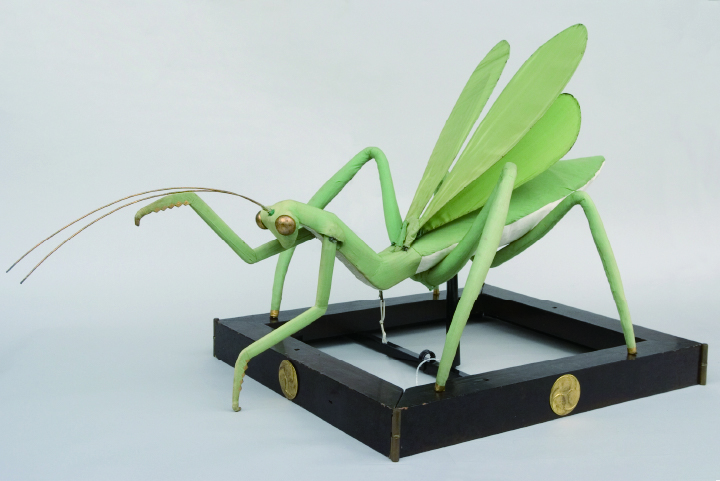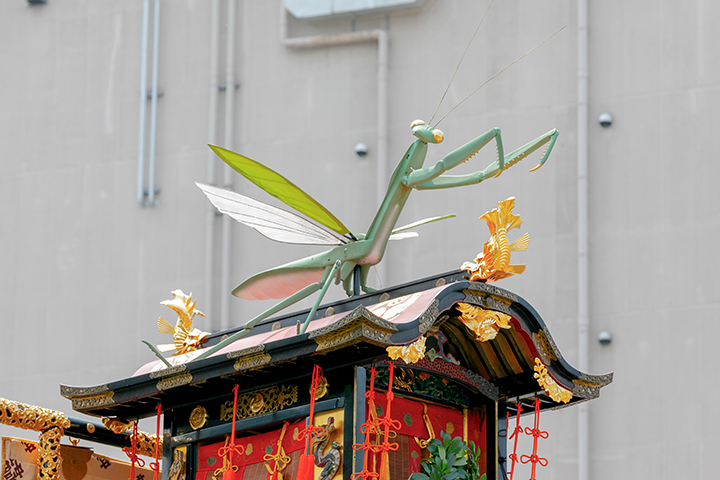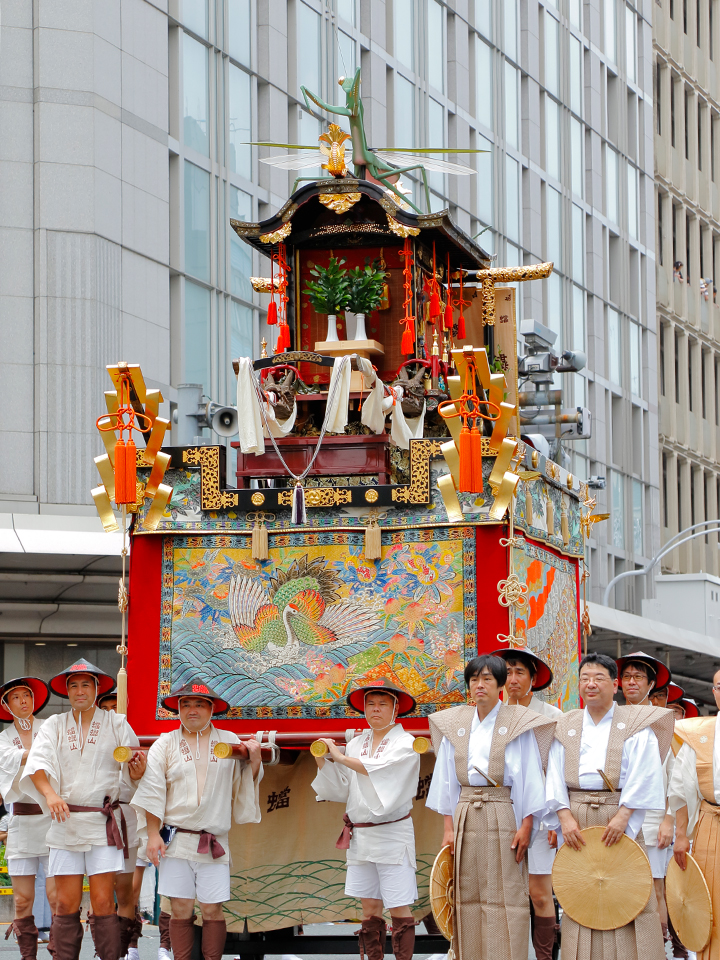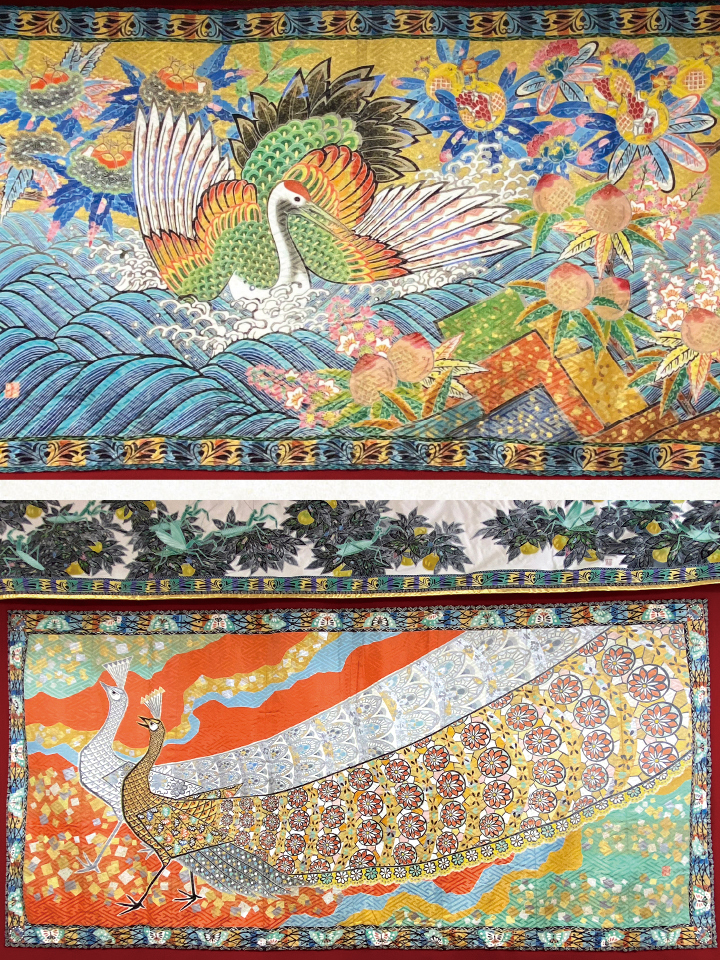 Older Mantis
Older Mantis
 Current Mantis
Current Mantis
This float derives its name from an old saying in China that a praying mantis, though small, is courageous enough to raise its ʻhatchets’ high in the air and stand in front of a marching army to try to stop it. The origin of this float dates back to the mid-14th century, when Shijo Takasuke (1292-1352), a high-ranking aristocrat from this neighborhood, courageously fought for a cause and was killed. A rich local merchant named Chin-uirou Tainensouki, who was an immigrant from China, sympathetically associated Shijo Takasuke with the proverbial praying mantis (known as a “Tourou” or “Kamakiri” in Japanese), and made a figure of the insect. The praying mantis figure was displayed on a cart owned by the Shijo family, and paraded along with Gion festival floats in 1376, the 25th anniversary of the death of the valorous courtier.
 Older Mantis
Older Mantis
 Current Mantis
Current Mantis
The greatest feature of this float is the fact that the praying mantis and the wheels of the mounted court cart are linked to move together mechanically, which is unique among the Gion floats.
 Tourouyama During the Gion Festival Procession
Tourouyama During the Gion Festival Procession
 Front and Lateral
Front and Lateral
The Chimaki is a charm protecting against calamities, which one puts at the entrance of a house or shop. Its origin is said to date back to when the god Susanowo-no-mikoto, looking for a place to stay for the night, was offered shelter by a man called Somin Shourai. Somin, despite being poor, took such good care of Susanowo that he told him to keep a charm made of straw put in a circle, and that it would protect him and all his descendants. This is why the Chimakis of the Gion Festival come with an inscription saying “Here is a descendant of Somin Shourai”.
464-1 Tourouyamacho Nakagyo-ku,Kyoto-shi, Kyoto-fu 604-8225